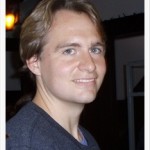 Beginning this summer and continuing for the next three years, Urantia Association will encourage an in-depth discussion on the role of teachers in the Urantia community, how we can better identify natural teachers, and how we can train all students of the book to become teachers in their lives.
Beginning this summer and continuing for the next three years, Urantia Association will encourage an in-depth discussion on the role of teachers in the Urantia community, how we can better identify natural teachers, and how we can train all students of the book to become teachers in their lives.
Central to this discussion is the question: Is it possible to measure and quantify depth of understanding?
It is much easier to measure breadth, the wide reach of The Urantia Book, its teachings and our community. We can count the number of study groups in any given community, nation or the world. We can count the number of conferences, of affiliated members, of recipients of our newsletters, and we can use this data to measure our growth.
This year we celebrate 60 years since the first publication of The Urantia Book and the first attempts by the Urantia community to organize and socialize its teachings. From those early groups in Chicago, our reach has expanded tremendously. The Urantia Book is now available in 17 languages, 26 countries have joined Urantia Association International and 12 more countries have organized communities on the cusp of joining. Analyzing the data from the last 60 years, we can see some years were stagnant, in some our growth appeared over-rapid, but with the perspective of time we can look back and see the steady progress that has led us to this moment.
But has the depth of understanding of the Urantia teachings increased? Bill Sadler, Jr. was one of our community’s first teachers, and when I listen to the tapes of one of his lectures, I am blown away by his depth of knowledge and how he could synthesize these 196 Papers and share dynamic truths held within. I had the honor of viewing the first index of The Urantia Book which was done on index cards held by wall sized card catalogues filled with references throughout the book. Think of the knowledge and dedication needed to create such a feat. Today, when I leaf through Ken Keyser’s copy of The Urantia Book which is filled with decades of notes and cross references, or I attend a lecture by Chris Halverson in Boulder, Colorado, USA, a presentation by Jaime King in Bogota, Colombia, or a Skype meeting with Jeffrey Wattles Gospel School, I am amazed at the depth of teaching available in our community.
How do we harness it? How do we train people to be better teachers, to add to the library of knowledge that our young community is building? This summer in Quebec we will focus on the family relationship and how it reflects our relationship with God. As parents, how do we teach depth of understanding and relationship with God to our children? True, we can expose them to wide varieties of religions, we can send them to religious classes every week, we can pray with them in nature – all measurable and quantifiable activities. But how do we teach our children to take the next step and explore depth of meaning?
A healthy community grows in both depth and breadth. If we focus too much on expansion with no effort put into depth of study, then the community is wafer thin and easily broken. If we become too focused on depth of study, we become insular and off-putting to new students of The Urantia Book, and our community will die within a generation. What are we doing at the Local, National, and International levels to balance our community and safeguard these teachings?
I hope we can discuss some of these questions in depth in person in Quebec, or at other conferences and gatherings over the next few years. We can all be energized by the challenges ahead!
In service,
Chris Wood
